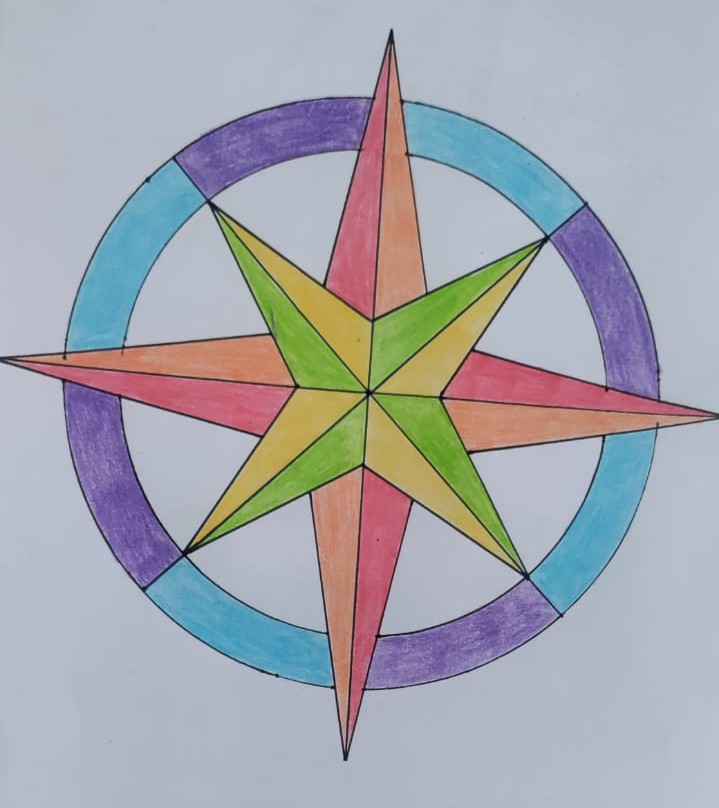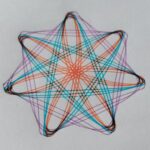Different Between Geometrical Design And Spirograph Design
Geometrical design and spirograph design both involve creating intricate patterns using geometric shapes, but they differ in their approach and execution.
-
Geometrical Design:
- Geometrical design focuses on utilizing basic geometric shapes such as circles, squares, triangles, and polygons to create patterns.
- It often involves precise measurements, angles, and proportions to create symmetrical and balanced compositions.
- Geometrical designs are typically created using tools like rulers, compasses, protractors, and drafting software.
- These designs can range from simple tessellations to complex geometric patterns found in architecture, art, and decorative motifs.
-
Spirograph Design:
- Spirograph design is a specific technique that involves creating intricate patterns using a set of gears, wheels, and pens.
- The spirograph tool consists of circular gears with teeth that interlock, allowing smaller gears to rotate within larger ones, creating a series of interlocking curves known as hypotrochoids and epitrochoids.
- By placing a pen in one of the gear’s holes and tracing the path as it rotates around the larger gear, various mesmerizing patterns can be produced.
- Spirograph designs often exhibit repeating and overlapping patterns with intricate curves and loops.
- While spirograph designs are geometric in nature, they have a distinct aesthetic characterized by their flowing, interwoven lines.
-
Execution:
- Geometrical designs are typically planned and executed with precision, often requiring careful calculation and measurement.
- Spirograph designs, on the other hand, are more fluid and organic in their execution. While some planning may be involved in choosing gear sizes and colors, much of the design process involves experimentation and exploration as the gears rotate and create patterns.
-
Variety and Complexity:
- Geometrical designs can vary widely in complexity, ranging from simple shapes and tessellations to intricate patterns found in Islamic art or mandalas.
- Spirograph designs also offer a wide range of complexity, but they are often characterized by their repetitive and mesmerizing patterns created through the interaction of gears. These designs can be simple or highly intricate, depending on the combination of gears used and the number of rotations.
-
Tools and Medium:
- Geometrical designs can be created using traditional tools such as rulers, compasses, and drafting software, as well as various artistic mediums such as pencils, pens, paints, and digital tools.
- Spirograph designs require a specific set of tools including spirograph gears, wheels, and pens. While traditional spirograph kits exist, there are also digital versions available that simulate the spirograph effect.
-
Applications:
- Geometrical designs have been used throughout history in various fields including architecture, engineering, mathematics, art, and design. They can be found in decorative elements, structural designs, and artistic expressions.
- Spirograph designs are often used for recreational purposes, as a creative outlet, or as a therapeutic activity. They are also popular in educational settings for teaching principles of geometry and symmetry.
-
Historical Context:
- Geometrical designs have a long history dating back to ancient civilizations such as the Egyptians, Greeks, and Mesopotamians. They were used in architecture, religious symbolism, and decorative arts.
- Spirograph designs, on the other hand, emerged more recently in the mid-20th century with the invention of the spirograph toy by British engineer Denys Fisher. The toy became popular for its ability to create mesmerizing and intricate patterns with ease.
-
Creativity and Expressiveness:
- Geometrical designs often emphasize precision and symmetry, with creativity expressed through the arrangement and manipulation of geometric elements.
- Spirograph designs offer a more playful and spontaneous approach to creativity, allowing for experimentation with different gear combinations, colors, and pen movements to produce unique and dynamic patterns.
-
Accessibility:
- Geometrical designs can be created by anyone with basic geometric knowledge and access to simple drawing tools or software.
- Spirograph designs are accessible to people of all ages and skill levels, as the spirograph toy provides a user-friendly way to create intricate patterns without requiring advanced drawing skills.
-
Integration with Technology:
- Geometrical designs have been greatly enhanced by advancements in digital tools and software, allowing for more complex and precise geometric constructions and manipulations.
- Spirograph designs have also been adapted into digital formats, with software and apps replicating the spirograph effect and allowing for experimentation with virtual gears and pens.
In conclusion, both geometrical and spirograph designs offer unique opportunities for creative expression and exploration of geometric patterns. While geometrical designs emphasize precision and planning, spirograph designs provide a more playful and spontaneous approach, making them accessible to a wide range of individuals for artistic and recreational purposes.
Share via:

